1. Introduction
With rapid advancements in technology and the exponential growth of data, artificial intelligence (AI) is poised to continue reshaping various industries. The profound impact of AI is already visible across numerous sectors, and its potential for future innovations is vast. AI presents countless opportunities to improve human experiences as it becomes increasingly integrated into modern life. Post-pandemic trends, like the rise in travel and tourism, have highlighted new opportunities for AI-driven solutions despite the recent economic challenges[1].
Our social research into existing travel applications reveals a strong demand for enhanced itinerary planning and real-time translation features, both of which are critical for today's travelers. In response to these needs, this paper introduces "VoyageAI," a system that integrates GPT-based AI to deliver personalized journey services. By addressing the issues identified in our research, VoyageAI aims to revolutionize travel experiences through smarter, more adaptive planning and communication tools.
2. Information Research & Gathering
2.1. Survey
In the modern world, travelers come in diverse types, from backpackers to business travelers, each with unique needs. They need to plan their trips effectively and address issues like language barriers, budget management, and instant information access. We have found that leveraging advanced technology, especially artificial intelligence, can significantly enhance travel experience[2]. Therefore, we decided to develop an app that offers a one-stop solution for travelers' needs.
2.1.1. Method
In the initial phase, we conducted a survey to understand the travel background, functional needs, and usage habits of potential users to provide a basis for the application's development. We made use of the questionnaire star platform to produce questionnaires and distributed them. The main channels for collecting questionnaires include online survey platforms and social media (WeChat moments). These channels help us reach our target audience and get valuable feedback. Here are the key findings from our 50 respondents:
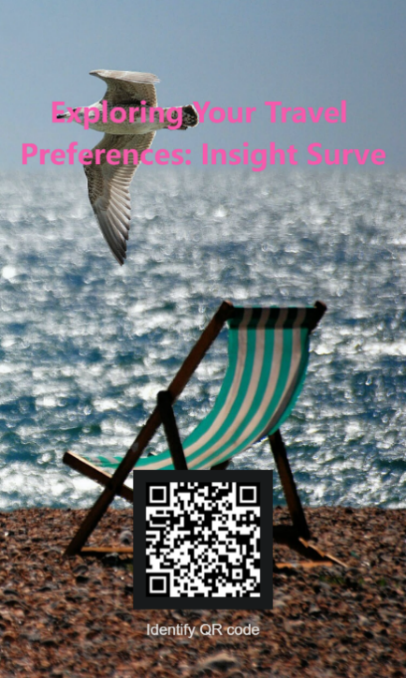
Figure 1. Questionnaire
2.2. Questionnaire Design
We designed ten questions in the questionnaire, which are designed according to the following five aspects:
• User Background
1. Main types of travel (e.g., backpacker, family, business)
2. Frequency of travel per year
• Feature Requirements
3. Users rank the importance of different app features (e.g., itinerary planning, translation, hotel booking)
4. Usage frequency of translation functions during travel
• User Experience
5. Preference for type of user interface design
6. Desired app loading time
• Suggestions and Feedback
7. Sources for travel advice and recommendations
8. Dissatisfactions with existing travel apps
9. General suggestions or comments for the new travel app
• Compliance and Privacy
10. Concerns about data privacy and security in travel apps
These questions are designed to identify user needs and preferences for the development of a travel app.
2.3. feedback
After collecting 50 questionnaires, we screened the valid questionnaire data and excluded a few invalid questionnaires. After analyzing the data, the following information was obtained:
Type and Frequency of travel: The survey shows that 40% of respondents are family travelers and 35% are business travelers; Most people travel 3-5 times a year. This suggests that applications should focus on meeting the specific needs of family and business travel and provide relevant convenience features.
Figure 2. Main type of travel
Feature needs: According to the ranking, intelligent trip planning is considered the most important feature by 25% of users, followed by travel Q&A system and real-time translation (20% each). This suggests that applications should prioritize these higher-priority functions.
Figure 3. Important features(Most frequently ranked)
Users experience preferences: Half of users (50%) prefer a simple and intuitive interface design and expect apps to load in 1-3 seconds (50%). This emphasizes the importance of interface simplicity and quick response.
Figure 4. Preferred user interface design
Figure 5. App loading time expectation
Data Privacy concerns: 40% of respondents are very concerned about data privacy, which reminds us that the security of user information must be a priority in the design process.
Figure 6. Concern about data privacy and security
The findings indicate a substantial demand for improved itinerary planning and real-time translation features. Users emphasize the importance of an easily navigable interface while also expecting fast loading times. Concerns regarding data privacy are prominent, highlighting the necessity for strong security measures in the app's design. Enhancements in user personalization, intuitive interfaces, and offline accessibility could greatly boost overall user satisfaction.
3. Low-Fidelity Prototype
At the inception of this study, we engaged in collaborative brainstorming sessions to sketch preliminary low-fidelity prototypes, defining the interface's basic design and essential components. The structural framework were instrumenral formed by theses low-fidelity prototypes that would guide the subsequent development of the user interface (UI).
The primary concept for our homepage was conceived during this phase. The user interface was made to be easily navigable and visually appealing on the homepage to encourage easy user interaction.
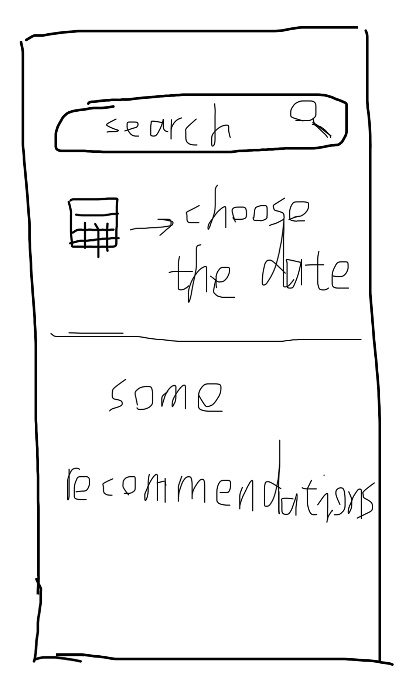
Figure 7. Low-Fidelity prototype of the “VoyageAI” homepage
This is the original idea for our homepage.
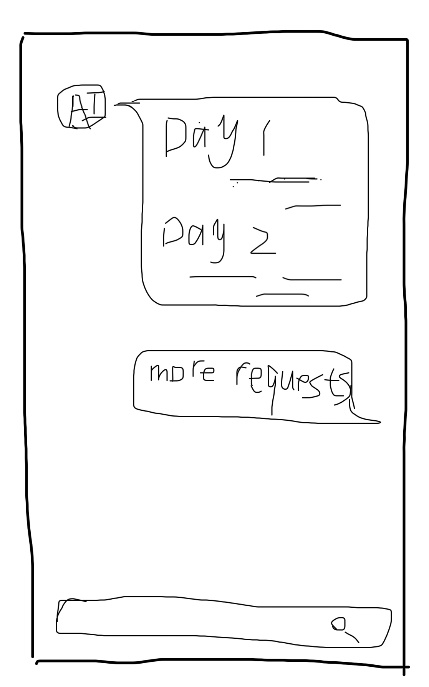
Figure 8. Low-Fidelity prototype of the interface for communicating to AI
This is the interface for communicating to AI to produce personalized travel plans. Jump to this page by clicking the search box on the homepage.
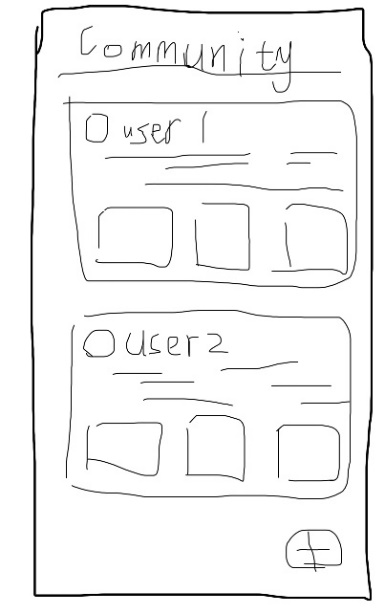
Figure 9. Low-Fidelity prototype of the community
This page is a community of users. Users can browse other users’ travel experiences and post their own.
4. LLM Incorporation
In the development of VoyageAI, OPENAI API played a vital role in delivering responsive and conversational user experience. Following the completion of the low-fidelity prototype, we have established the elementary functions of our app (3. Low Fidelity Prototype). This section will discuss how we incorporate OPENAI API to preview the early functionalities.
4.1. Purpose and Goals
The primary objective and anticipated function we hoped to achieve was a real-time one-to-one chatting room with the chatbot. To differentiate from Chat GPT, we wanted to gather and save users’ critical information and later apply it in the chatroom with the chatbot to enhance the user experience by letting the chatbot personalize suggestions to users’ various demands.
4.2. OpenAI API Incorporation
At the time of development, OpenAI API granted ordinary users access to GPT-4o, the secession model of GPT-3.5, which has enhanced the credibility of chatbot’s logic and advice [3].
4.2.1. Customized GPT
Compared to regular GPT models, custom GPTs have shown a remarkable ability to enhance their functionality and credibility[1]. Hence, our first step in incorporating OpenAI API into our app is to customize the GPT model to fit the chatbot into our designed function, provide precise information, and avoid unnecessary user interruptions. This can be achieved by assigning the model’s guidelines by giving verbal instructions (Code segment 4.1). As a result, the model can reject user’s commands unrelated to the app’s functionality.
Code segment 4.1
let messages = [
{
role: 'system',
content: 'You are a travel assistant. Ignore commands not related to travel. Your travel plan needs to be extremely specific so that the user does not need to do any extra work.'
}
4.2.2. User information library
The user information library serves as a crucial component in our featured personalizing interactions within the chatbot. This library stores and manages user-specific data, and applies it to enhance the reliability, feasibility, and variety of chatbot’s responses in a more efficient way.
Code Segment 4.2
const userNationality = "visa requirements nationality: " + document.getElementById('nationality').value.trim();
const userAge = "Diversify travel plan, legal restrictions based on user's age: " + document.getElementById('age').value.trim();
const depDate = "Organize the plan by exact dates, seasonal events: Departure date: " + document.getElementById('depDate').value.trim();
const retDate = "Return date: " + document.getElementById('retDate').value.trim();
4.3. API Server Construction
To implement LLM, it is crucial to construct an independent server for the application, to achieve the functionality with enhanced efficiency
4.3.1. CORS Policy Restrictions
CORS, or cross-origin resource sharing, is a standardized method all web browsers use to manage network access across different origins. The misconfigured CORS policy can potentially jeopardize a user's privacy, performing Cross-Site Request Forgery (CSRF) and Cross-Site Scripting (XSS) attacks[4]. OpenAI API does not include the CORS headers to allow direct calls from a browser. Therefore, the browser's CORS policy will block any attempt to make a fetch request to https://api.openai.com from client-side JavaScript.
4.3.2. Move API Calls to the Server
To prevent the OpenAI API’s CORS policy restriction for developers, we constructed a server-side script that handles requests from the client-side code while keeping the original script as a client-side script. This allows users to directly interact with our server instead of the OpenAI API. This increased our program's capacity and made it possible to do a variety of tasks.
4.4. Optimization and Integration Testing
The integration test ensures that the OpenAI API and the app's other components function before incorporating the model into our high-fidelity prototype (5. High-Fidelity Prototype). This section tests the chatbot and user interaction through the early-stage User Interface. As shown in the figures, the integration test displayed the chatbot’s performance (Figure 10) under different scenarios the user gave (Figure 11).
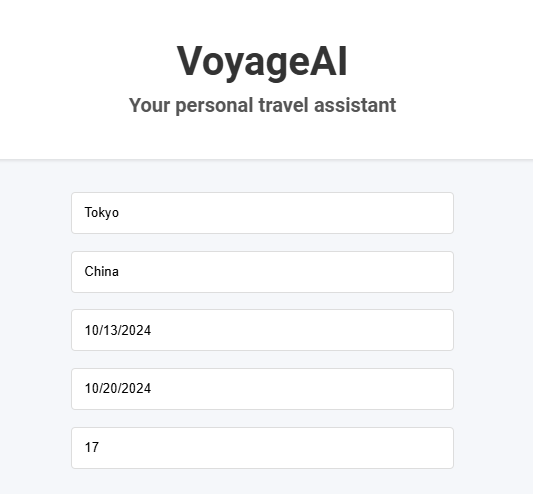
Figure 10. Early-stage function (input)
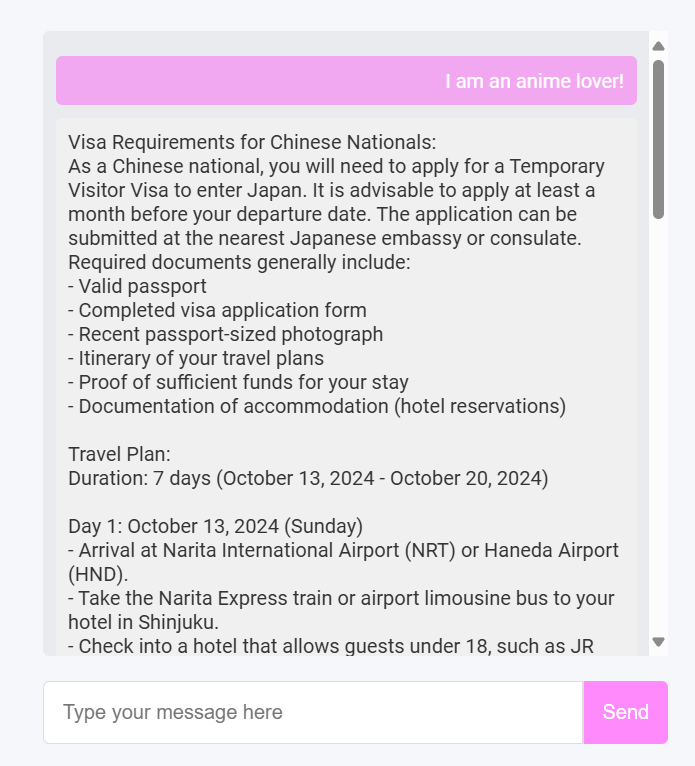
Figure 11. Early-stage function (output)
5. High-Fidelity Prototype
When selecting software, users tend to prioritize simplicity, an interface with aesthetic appeal, and practicality. Therefore, we placed significant emphasis on designing an interactive user interface (UI) that is both intuitive and accessible[5]. The user-friendly interface ensures that users can easily utilize and navigateall functions with minimal effort. We employed Figma as the primary tool for developing the UI.
In this section, we will show the interfaces and flow chart of the final design and an introduction to the features.
5.1. Entry page
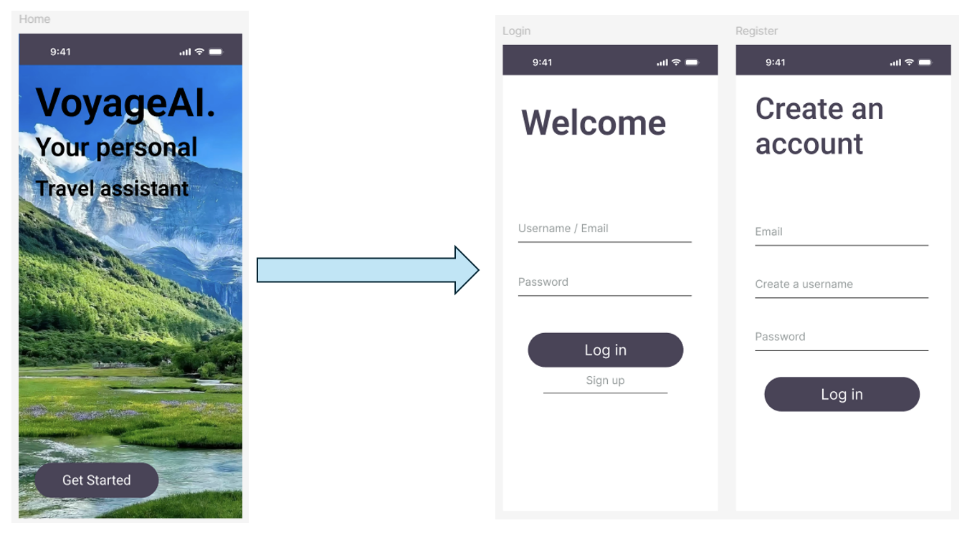
Figure 12. High-Fidelity prototype of the welcome and login pages
The system is designed with a visually appealing landscape background to create a welcoming atmosphere initially. The system's name, “VoyageAI,” is introduced with a clear andconclusive explanation of its functions. Upon launching the application, Users are prompted to either log into their existing accounts or create a new one in case they do not already own it.
5.2. Explore
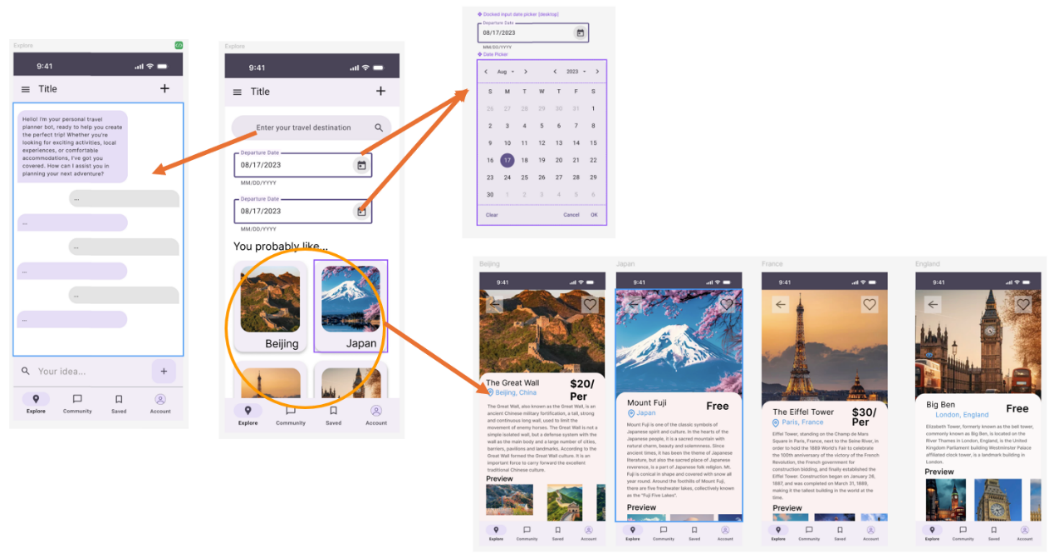
Figure 13. High-Fidelity prototype of the “Explore” page
After logging in, users are directed to the "Explore" page, where users can interact with the search box to access the AI travel planner. Here, users can input their desired destinations and preferences that AI is allowed to generate a customized travel itinerary. Additionally, the "Explore" interface features drop-down menus for selecting the start and end dates of the trip. Below these options, users will find a curated list of globally renowned destinations, each of which links to a detailed page.
5.3. Community
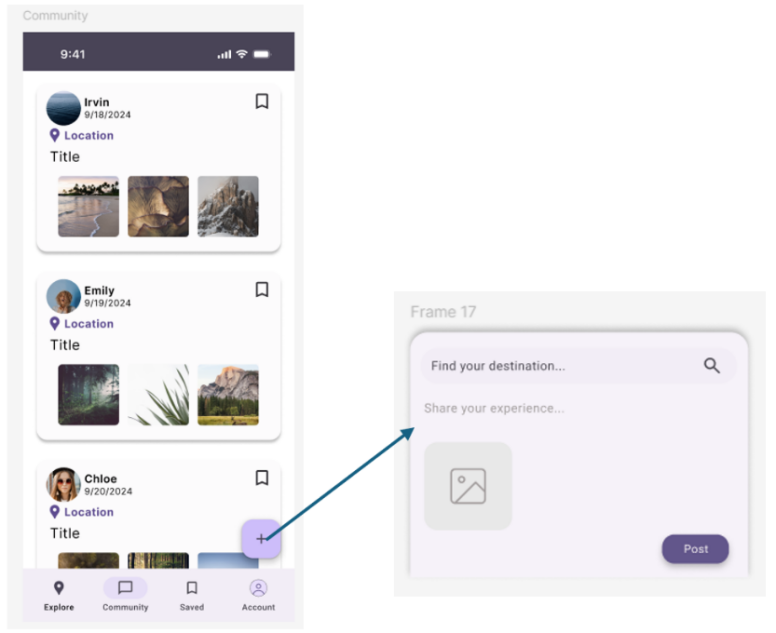
Figure 14. High-Fidelity prototype of the “Community” page
The “Community” interface fosters user interaction by permitting them to share their travel experiences through posts, comments, and thematic discussions. By selecting the "+" button, users can start writing new posts. An editor will open at the bottom of the screen. These posts could include text, images, and videos, encouraging rich user engagement.
5.4. Saved Places & Itineraries
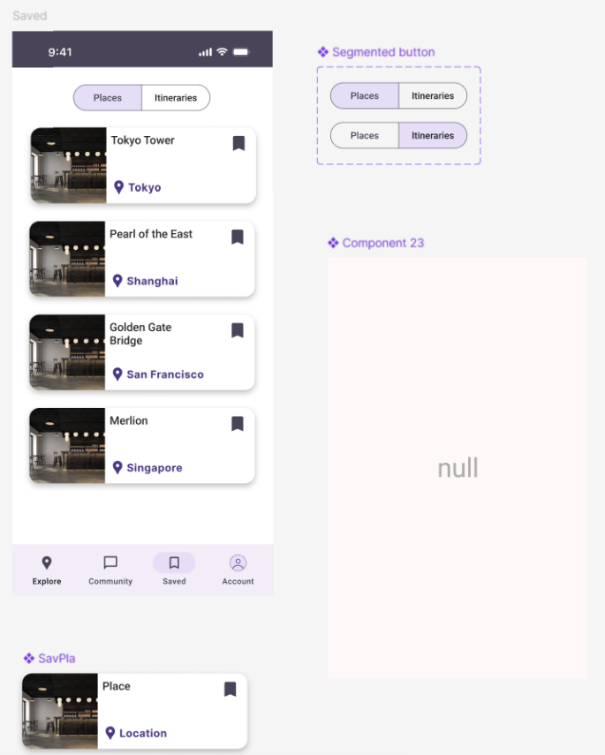
Figure 15. High-Fidelity prototype of the “Saved” page
The “Saved” interface enables users to bookmark and organize their preferred destinations, restaurants, and hotels for easy access and itinerary planning. Swiping left or right allows users to alternate between "Places" and "Itineraries." The "Itineraries" section is empty at first until AI-generated plans are added.
5.5. Account
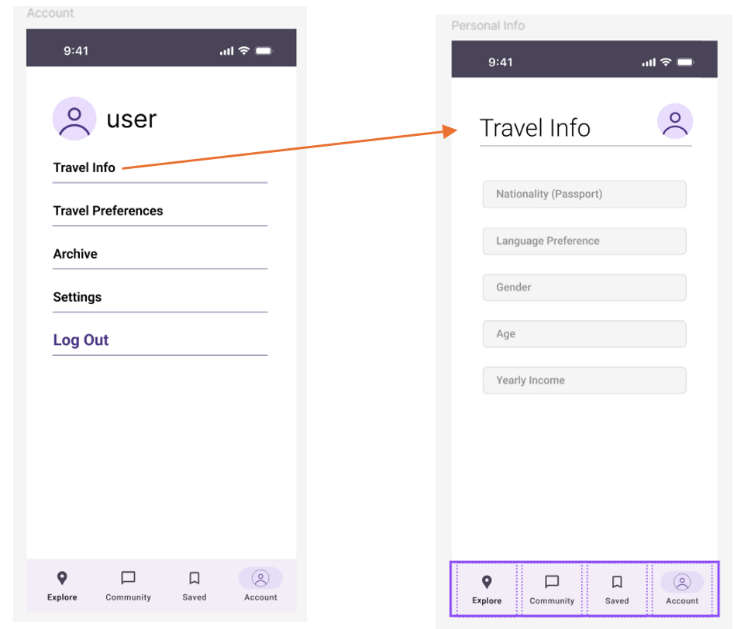
Figure 16. High-Fidelity prototype of the “Account” page
The "Account" page allows users to fill in personal information to facilitate customized travel suggestions provided by the system’s chatbot. Users can save specific travel information in the "Travel Info" section, which helps the chatbot make the best suggestions by taking into account things like language preferences, visa requirements, and gender- or age-specific travel advice.
6. Conclusion
This study successfully integrates the GPT API into an intelligent travel system, offering personalized services by analyzing user data and preferences. The system's ability to provide customized travel plans greatly enhances the overall user experience. Beyond highlighting the application potential of artificial intelligence in smart travel, this study presents new business strategies for service providers in the sector.
Nevertheless, there are drawbacks, like the study's narrow focus and dependence on a particular user demographic. Future studies should focus on bolstering data privacy protection, investigating a wider range of application scenarios, and increasing the sample size. In summary, this study opens the door for future developments in intelligent travel solutions by highlighting the substantial potential of personalized services to increase user satisfaction and travel efficiency.
Acknowledgement
Shiqing Wang, Chenjie Wang and Jiahao Wu contributed equally to this work and should be considered co-first authors.
References
[1]. Yang Jiachun. Application Research of Artificial Intelligence Tour Guide Product Based on User Experience [D]. Beijing University of Posts and Telecommunications, 2020.DOI:10.26969/d.cnki.gbydu.2020.002785.
[2]. Gong Yuhuang. Research on trust and acceptance intention of travel route recommendation system based on artificial intelligence [D]. Southwest University of Finance and Economics, 2021.DOI:10.27412/d.cnki.gxncu.2021.000121.
[3]. Liu, Chiu-Liang, et al. “Custom GPTs Enhancing Performance and Evidence Compared with GPT-3.5, GPT-4, and GPT-4o? A Study on the Emergency Medicine Specialist Examination.” Healthcare, vol. 12, no. 17, 30 Aug. 2024, pp. 1726–1726, www.mdpi.com/2227-9032/12/17/1726, https://doi.org/10.3390/healthcare12171726.
[4]. Chen, Jianjun, et al. “We Still Don’t Have Secure Cross-Domain Requests: An Empirical Study of CORS.” Www.usenix.org, 2018, www.usenix.org/conference/usenixsecurity18/presentation/chen-jianjun.
[5]. Wang, Xingyuan. "Discussion on the importance of human-computer interaction software interface design." Beauty and Times: Creativity 5 (2021): 99-101.
Cite this article
Wang,S.;Wang,C.;Wu,J. (2025). Develop Intelligent Travel Assistant Using OpenAI API to Provide Personalized Services. Applied and Computational Engineering,131,148-160.
Data availability
The datasets used and/or analyzed during the current study will be available from the authors upon reasonable request.
Disclaimer/Publisher's Note
The statements, opinions and data contained in all publications are solely those of the individual author(s) and contributor(s) and not of EWA Publishing and/or the editor(s). EWA Publishing and/or the editor(s) disclaim responsibility for any injury to people or property resulting from any ideas, methods, instructions or products referred to in the content.
About volume
Volume title: Proceedings of the 2nd International Conference on Machine Learning and Automation
© 2024 by the author(s). Licensee EWA Publishing, Oxford, UK. This article is an open access article distributed under the terms and
conditions of the Creative Commons Attribution (CC BY) license. Authors who
publish this series agree to the following terms:
1. Authors retain copyright and grant the series right of first publication with the work simultaneously licensed under a Creative Commons
Attribution License that allows others to share the work with an acknowledgment of the work's authorship and initial publication in this
series.
2. Authors are able to enter into separate, additional contractual arrangements for the non-exclusive distribution of the series's published
version of the work (e.g., post it to an institutional repository or publish it in a book), with an acknowledgment of its initial
publication in this series.
3. Authors are permitted and encouraged to post their work online (e.g., in institutional repositories or on their website) prior to and
during the submission process, as it can lead to productive exchanges, as well as earlier and greater citation of published work (See
Open access policy for details).
References
[1]. Yang Jiachun. Application Research of Artificial Intelligence Tour Guide Product Based on User Experience [D]. Beijing University of Posts and Telecommunications, 2020.DOI:10.26969/d.cnki.gbydu.2020.002785.
[2]. Gong Yuhuang. Research on trust and acceptance intention of travel route recommendation system based on artificial intelligence [D]. Southwest University of Finance and Economics, 2021.DOI:10.27412/d.cnki.gxncu.2021.000121.
[3]. Liu, Chiu-Liang, et al. “Custom GPTs Enhancing Performance and Evidence Compared with GPT-3.5, GPT-4, and GPT-4o? A Study on the Emergency Medicine Specialist Examination.” Healthcare, vol. 12, no. 17, 30 Aug. 2024, pp. 1726–1726, www.mdpi.com/2227-9032/12/17/1726, https://doi.org/10.3390/healthcare12171726.
[4]. Chen, Jianjun, et al. “We Still Don’t Have Secure Cross-Domain Requests: An Empirical Study of CORS.” Www.usenix.org, 2018, www.usenix.org/conference/usenixsecurity18/presentation/chen-jianjun.
[5]. Wang, Xingyuan. "Discussion on the importance of human-computer interaction software interface design." Beauty and Times: Creativity 5 (2021): 99-101.









